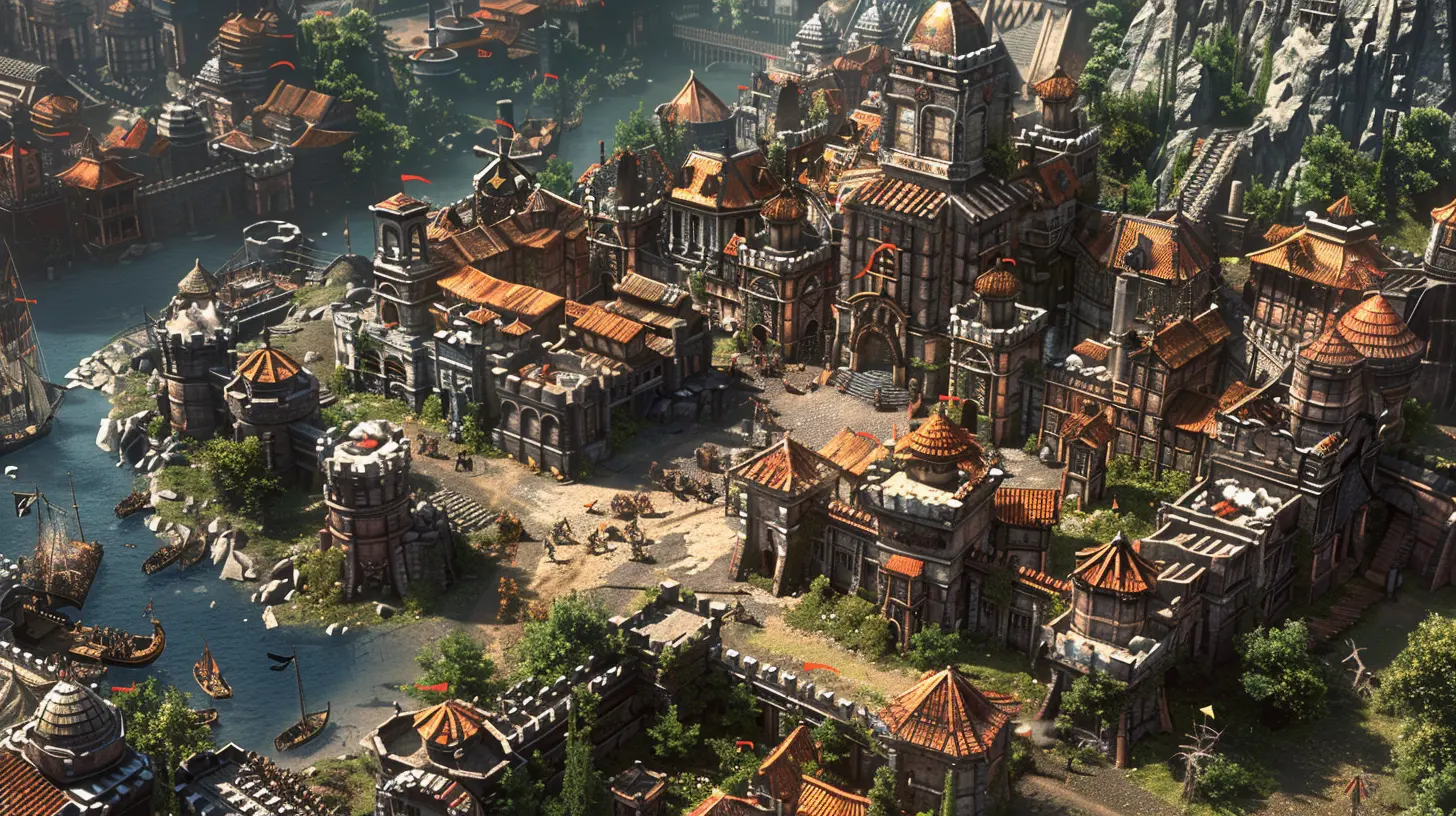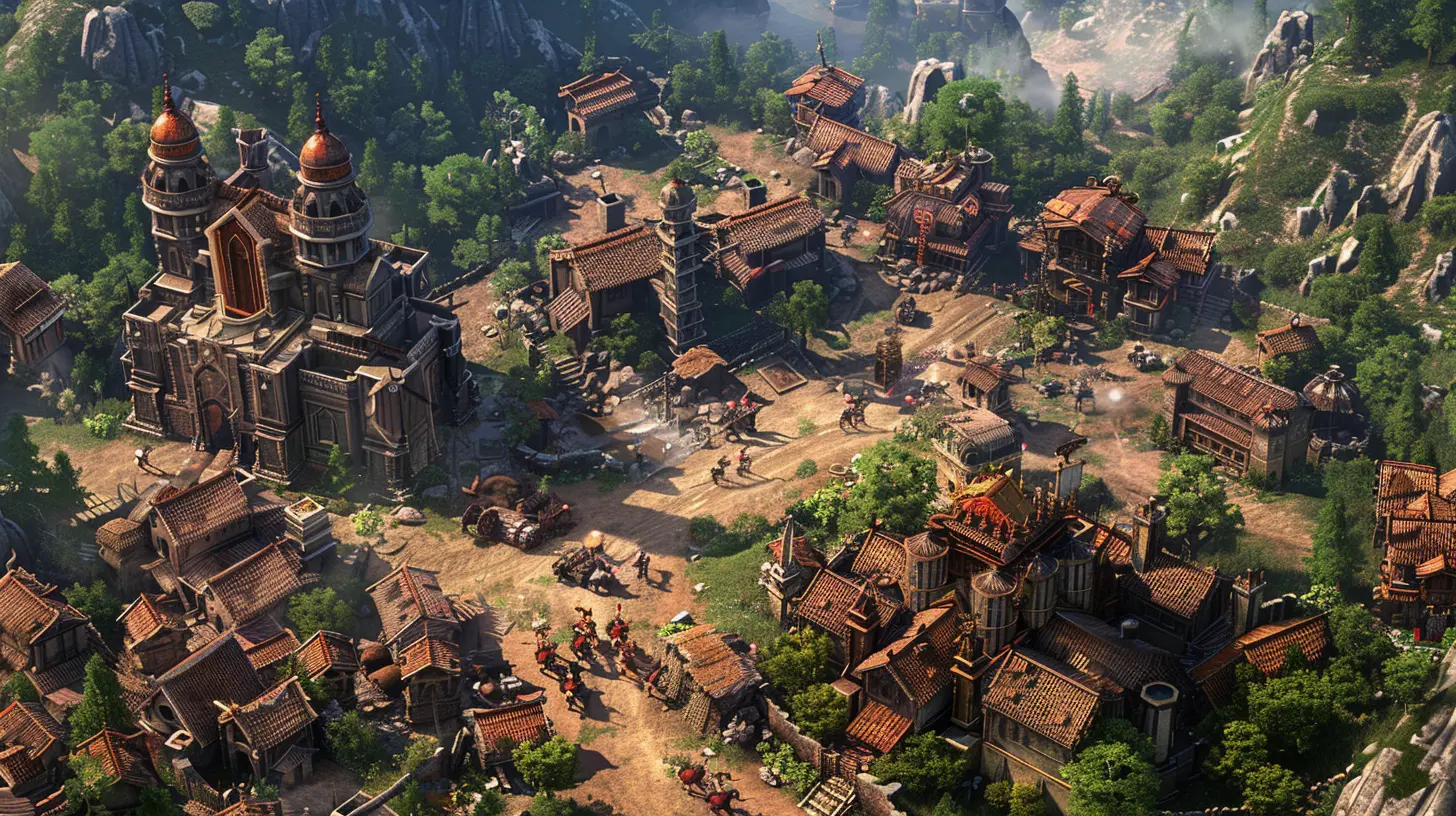Hidden Mechanics in RTS Games You Need to Know
24 September 2025
Real-Time Strategy (RTS) games have always been a fascinating genre. They challenge your brain, force you to think on the fly, and require a blend of strategy, quick decision-making, and creativity. But here’s the kicker: most RTS games have hidden mechanics that aren’t explained in tutorials or manuals. These mechanics aren’t always obvious, and they’re often what separates casual players from competitive ones. Think of them as the secret sauce behind the masterpiece—something you need to know if you want to play like a pro.
In this article, we’re going to dissect some of these hidden mechanics, break them down into digestible bits, and, since we’re all nerds here, have a little fun talking about the intricacies of RTS games. Buckle up, because we’re diving deep!
What Are Hidden Mechanics Anyway?
Before we start geeking out, let’s make sure we’re on the same page. Hidden mechanics are features or gameplay elements not explicitly stated in the game’s instructions or UI. They’re there—you just have to discover them, usually through experimentation or by reading forums where the hardcore players hang out.For example, if you’ve ever played an RTS game and thought, “Why is that unit behaving differently from what I expected?” or “How did my opponent do that so efficiently?” you’ve probably encountered one of these sneaky, hidden gems.
1. Attack-Move Isn’t Always What It Seems
You’ve probably heard of (or used) the attack-move command. It’s that trusty order you give your units to attack anything hostile they encounter along the way. Sounds simple, right? But here’s the twist: in many RTS games, attack-move doesn’t prioritize targets the way you’d expect.Some games, like Starcraft II, have units that will prioritize structures over enemy units, while others might target the closest enemy regardless of its threat level. Mastering how attack-move works in your specific game can give you a huge edge. For example, instead of letting your units derp around attacking random targets, you can manually click on high-value targets to maximize your engagement efficiency.
Pro Tip: Learn to "focus fire." Even though attack-move is convenient, sometimes you need to micromanage and make sure your units are concentrating firepower on key threats. It’s the difference between precision sniping and spraying bullets everywhere.
2. The Influence of Terrain and Line of Sight
Most RTS games incorporate the terrain into their mechanics—yet it’s often not talked about in detail. For instance, high ground usually gives units a massive tactical advantage. Units on higher terrain not only gain better visibility (line of sight), but they can also become untouchable to enemies on lower terrain in some games (Age of Empires II, anyone?).Here’s the juicy part: certain games allow you to manipulate line of sight to your benefit. Want to hide a key unit or entire army behind a hill? Easy. Want to bait your opponent into chasing you uphill to gain a defensive advantage? Even better.
Pro Tip: Use terrain like you’re playing chess. Don’t just build and rush blindly; scout, position, and think about how the battlefield can work in your favor.
3. The Magic of Unit Formations
Let’s talk formations. If you’ve ever tried grouping units together, you’ve probably noticed they don’t just huddle up like a high school sports team. Most RTS games use hidden algorithms to decide where units in a group should stand. This isn’t just an aesthetic choice—it has significant gameplay implications.For instance, some games spread out ranged units to minimize splash damage from enemy artillery, while others cluster melee units to maximize their collective power. Knowing how to exploit these algorithm rules lets you micromanage your armies with ruthless efficiency.
Pro Tip: Practice splitting your units if you’re up against enemies with heavy splash damage. Ever heard of “stutter-stepping” in Starcraft II? It’s when you move and shoot in short bursts. Mastering these tiny moves can completely change the tide of battle.
4. Resource Gathering Hacks
RTS games typically focus on managing two things: your army and your economy. But here’s something you might not realize: resource gathering has hidden mechanics, too. In many games, worker efficiency depends on distance from the resource node, the number of workers assigned, and whether there’s any downtime between trips.For instance, in Warcraft III, you can assign the perfect number of workers to a gold mine for optimal gathering (it’s five, by the way). Anything more, and you’re just wasting resources. Similarly, some games allow "resource pairing," where you alternate between harvesting different resources to maintain balance.
Pro Tip: Constantly monitor your workers. Accidental idle workers are like leaving your spaghetti to boil over—it’s a costly mistake.
5. Invisible Buffs and Debuffs
Do you ever feel like your units are suddenly performing better—or worse—than normal? It’s not in your head. Many RTS games include hidden buffs or debuffs triggered under specific conditions. For example, units might perform better when near a hero character, or they may slow down when carrying resources.One notorious example is the “fatigue” mechanic in certain older RTS titles. Units that were kept moving without rest would gradually slow down or weaken. The game didn’t explicitly tell you about it—you had to figure it out through observation. Wild, right?
Pro Tip: Always look into how units interact with one another. If you’re sending out scouts or small groups of units, know whether they’ll lose effectiveness without backup.
6. AI Behavior Manipulation
Here’s something juicy: you can bait AI-controlled enemies by exploiting their hidden behavior rules. Many RTS games have predictable AI patterns that players can manipulate. For instance, if you keep poking at the edges of an AI’s base, it may send its entire army after you, leaving its defenses completely open.Pro Tip: Think of AI like a cat chasing a laser pointer—it’s predictable and easily distracted. Constant harassment can leave your AI opponent floundering while you build up a sneaky counterstrike.
7. Hotkeys and Macros – The Unsung Heroes
Let’s be honest: a lot of players don’t bother learning hotkeys. But here’s the thing: hotkeys aren’t just about convenience—they’re game-changers. Using hotkeys allows you to execute commands faster than your opponent can. Whether it's queuing up units, swapping between buildings, or assigning control groups, mastering hotkeys transforms you into an RTS god.And if you’re into ultra-competitive play, many games support custom keybinds or macros. These let you chain multiple actions into a single keypress, saving precious seconds in clutch moments.
Pro Tip: Start slow. Practice one or two essential hotkeys until they’re second nature, then gradually expand your repertoire. Before you know it, you’ll be zipping through commands like a virtuoso.
Why Hidden Mechanics Matter
You might be asking, “Okay, but why should I care about these hidden mechanics?” The answer is simple: understanding these systems gives you an edge. RTS games are all about efficiency—using what you know to outthink, outmaneuver, and outplay your opponent. Hidden mechanics are like cheat codes built into the system, waiting for savvy players to uncover.And let’s be real—it feels great to pull off a victory using some obscure trick your opponent didn’t see coming. It’s all about that smug satisfaction, right?
Final Thoughts
So, there you have it. Hidden mechanics in RTS games aren’t just fun quirks—they’re the secret weapon of the pros. Whether it’s exploiting attack-move, leveraging terrain, or mastering hotkeys, these little-known tricks can elevate your gameplay faster than you’d think.The best part? Learning these mechanics is part of the journey. Every time you play, there’s something new to discover. And who knows? You might even stumble across a hidden mechanic that no one else has figured out yet. How cool would that be?
Remember, the devil’s in the details, and in RTS games, details can mean the difference between glorious victory and crushing defeat. So, next time you fire up your favorite RTS, keep an eye out for those sneaky mechanics. Your inner tactician will thank you.
all images in this post were generated using AI tools
Category:
Real Time StrategyAuthor:

Pascal Jennings
Discussion
rate this article
1 comments
Carina Turner
Unearth strategies; hidden mechanics shape victories!
September 28, 2025 at 4:58 AM

Pascal Jennings
Absolutely! Understanding these hidden mechanics is crucial for gaining an edge in RTS games. They often dictate gameplay dynamics and can lead to unexpected victories.


